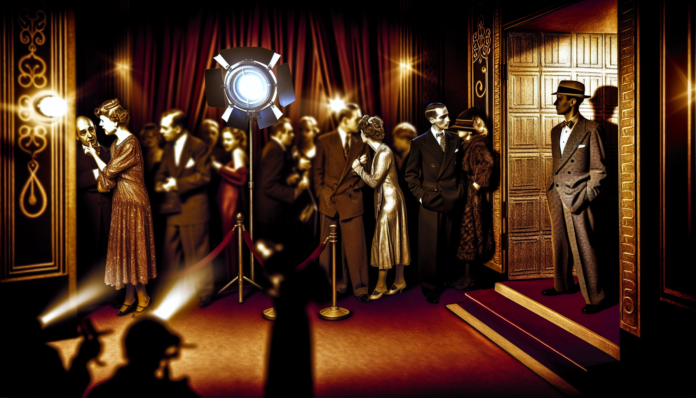Introduction
The 1940s and 1950s heralded a golden age for Hollywood, where glitz and glamour reigned supreme, but beneath the shiny surface, a darker narrative unfolded. One of the most notorious scandals of this era involved the tempestuous romance between screen legends, Clark Gable and Carole Lombard. Their passionate affair and tragic ending not only captivated the public but also reflected the strict moral codes of the time.
The backdrop of post-war America was marked by conservative values, with a rigid social structure that dictated how love and relationships should manifest. Infidelity, divorce, and public displays of affection were scandalous, and the stakes for Hollywood stars were exceptionally high, both in terms of their careers and personal lives.
The Scandal
Clark Gable, the “King of Hollywood,” was known for his rugged charisma and leading man status. He was already married when he became involved with the talented and vivacious Carole Lombard, a relationship that would become legendary. The affair began as Gable’s marriage to actress Rhea Langham was deteriorating, and Lombard’s innovative spirit appealed to him like no other.
In January 1942, their relationship took a turn when Lombard’s mother expressed her disapproval, and whispers about their romance grew louder. The press caught wind of their secretive meetings; rumors circulated about the couple’s clandestine trips to Mexico, where divorce was notoriously easier to obtain. Reports suggested that Gable and Lombard’s relationship was not only romantic but also a brewing scandal, with headlines labeling Lombard as a “homewrecker.”
Despite the tumult, they married in 1939, with Gable’s career on the rise, further fueling the public’s fascination. However, the couple faced numerous challenges, including intense scrutiny from the press and the societal norms that dictated what was acceptable behavior in Hollywood. Quotes from that time reveal a mixed reception: while many celebrated their union, others condemned it as scandalous. “Their love was the talk of the town but, alas, it seemed that love alone was not enough,” remarked one contemporary journalist.
Tragedy struck in 1942 when Lombard died in a plane crash, drastically shifting Gable’s public persona from dashing heartthrob to a grieving widower. The scandal, originally deemed to be one of illicit love, transformed into a story of heartbreak, ultimately leading the public to view him as a tragic figure.
Moral and Cultural Analysis
The reaction to Gable and Lombard’s affair was emblematic of the era’s strict moral standards. Many embraced the notion of “Hollywood’s perfect couple,” while others looked down on Lombard for breaking traditional roles. The implications were severe; for Gable, his box office appeal softened, and for Lombard, her spirited persona became overshadowed by her tragic end.
Fast forward to today, and the narrative surrounding their romance would likely take a different angle. Modern audiences may view their relationship as a complex tale of love in a harsh, judgmental environment, where personal happiness often came at the cost of societal acceptance. Today’s discussions around consent, relationship dynamics, and emotional complexities would provide additional layers of understanding that stereotypes of the 1940s narrowly overlooked.
In current times, the notion of celebrity relationships has evolved; scandals are often seen through a lens of empathy rather than judgment. The public is now more inclined to appreciate the struggles that come with fame and the quest for personal happiness, which illuminates the enduring complexities of love and society—then and now.

